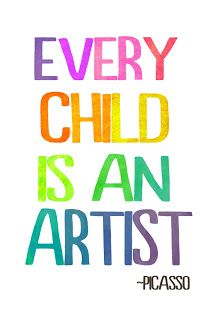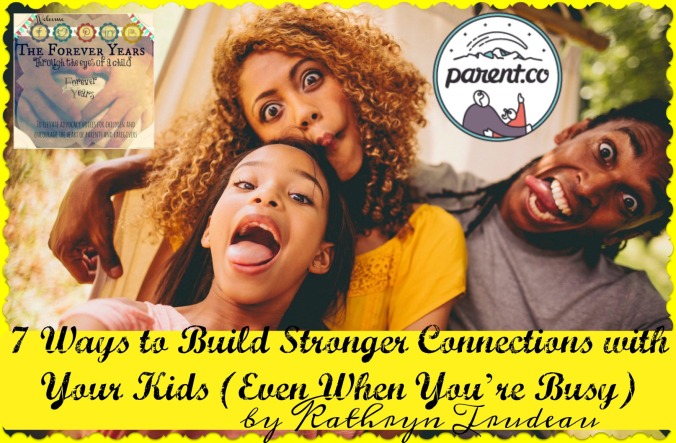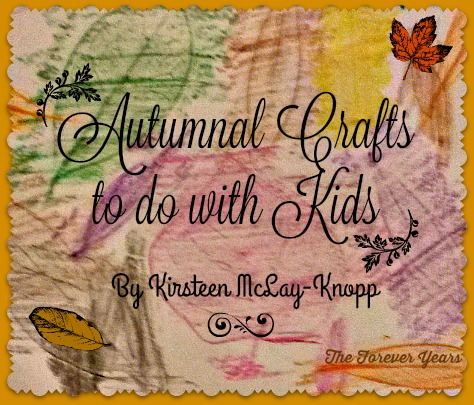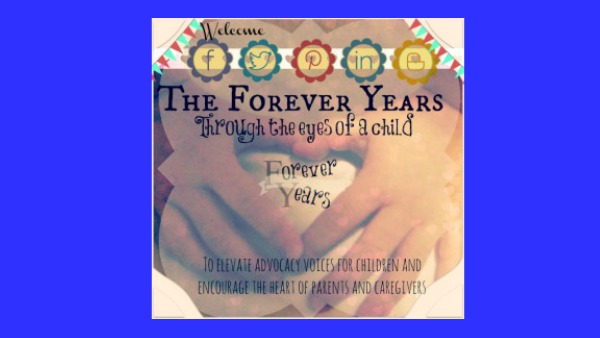Sarah Wilson shows us how to put together a “Whimsical Woodland Party”, something she did recently for her five year old daughter. Great, creative ideas shared by an energetic Mum!
Fun with our kids
10 Dr. Seuss Books you’ve Never Heard of, by Crystal Ponti
Dr. Seuss is one of the most beloved children’s writers of all time. During his career, he wrote more than 60 playful and exuberant books – each with a deeper message about life, love, and humanity.
His most memorable titles, like “Green Eggs and Ham” and “Cat in the Hat”, are mainstays on children’s bookshelves. But he also penned many books that never quite made it into the spotlight.
Here are 10 Dr. Seuss books you might not have heard of (and if you have, you must be a super fan):

“And to Think That I Saw It on Mulberry Street” (1937)
The very first book Dr. Seuss ever published under his pen name, this lively tale about Marco and his vivid imagination predates his bestselling titles, but is still among his best. Travel down Mulberry Street, the most interesting place in town – a place where the ordinary becomes extraordinary. Marco spins a wonderful story for his father, turning everyday sights into wild highlights of his journey home from school.

“I Can Lick 30 Tigers Today!” (1969)
Follow the Cat in the Hat’s son, daughter, and great-great-grandfather on three magnificent adventures, as told by Cat in the Hat himself. From battles with tigers to the unexpected consequences of a runaway imagination, this is the only book where children can thunk a Glunk and wrestle with King Looie Katz. The illustrations are a unique combination of gouache and brush strokes rather than the usual pen and ink, adding even more uniqueness to a timeless rarity.

“Would You Rather Be a Bullfrog?” (1975)
“Would you rather be a clarinet, a trombone, or a drum? (How would you like to have someone going boom-boom on your tum?)” In traditional form, Dr. Seuss asks young readers fun, rhyming questions to make them think, ponder, and laugh. The book helps children understand there are so many things they can be, and that they have plenty of time to figure out who they are and where life might take them.
(To read more of this article, please follow the link below…)
10 Simple Ways to Build an Unbreakable Bond With Your Child, by Angela Pruess
Our connection to our children means everything.
It means the difference between a confident child and an insecure one. It means the difference between a cooperative child and a defiant one. Our early attachments and ongoing connection to our children fostered through love, nurturance, and guidance is a strong predictor of our child’s success in many areas of life.
We’ve heard a lot about attachment, so the concept and importance of bonding with our baby seems obvious. Just because your little one has grown to become a lot bigger, smellier, and sassier doesn’t mean your bond and connection with them is any less vital to their development. In fact, it continues to be of the utmost importance throughout childhood.
Life with kids is busy. It’s not uncommon at the end of the day to find yourself wondering whether you even sat face to face with your child. Here’s the good news: You’re likely already engaging with your child in activities that promote a strong parent-child relationship.
Reading
We all know reading with children is a simple way to improve their language and reading skills. But research also shows that reading with children actually stimulates patterns of brain development responsible for connection and bonding.
This makes sense when we consider that story time usually involves cuddling, eye contact, and shared emotion. If you make reading together a priority in your home, you are without a doubt connecting with your child.
Art
Engaging in art or craft activities with children is an awesome way to provide not only a fun and enjoyable experience, but a therapeutic one as well. No matter their age, you’ll be hard pressed to find a child who can’t find an art medium that interests him.
When engaged in a creative process with children, we provide an outlet for them to express their thoughts and feelings. This is especially true with younger children, who aren’t yet able to verbalize their complex emotions. When your child has access to acreative outlet, odds are that interactions between the two of you will be more positive.
Music
Whether listening to them play an instrument or dancing to the “Trolls” soundtrack together, music offers lots of benefits for both parent and child, including bringing our awareness into our bodies and into the current moment. Your kids will be practicing mindfulness without even knowing it!
It’s pretty difficult to focus on a mistake at school yesterday or the test coming up tomorrow when we’re busy processing auditory input as well as coordinating our motor skills.
Nature
Feeling stressed? Stress is often a huge barrier to parents engaging with their children. Spending time with your child out in nature will go a long way to increase emotional health and physical well-being for both parties.
Research tells us that exposure to nature reduces our blood pressure, heart rate, muscle tension, as well as the production of stress hormones. Nature is no joke. Even if you don’t have time to go for a hike, simply water a plant together. These studies show similar effects can be derived from even small amounts of nature.
Play
Play is the language of children, so it only makes sense that we should try to connect with them though something that comes so naturally. When parents enter their child’s world and follow their lead in play, they open up the possibility for many positive outcomes, including taking on a different relationship role and seeing our children from a new perspective.
(To read more of this post, please follow the link below…)
http://www.parent.co/10-simple-ways-to-build-an-unbreakable-bond-with-your-child/
“What do you See?”: Unlocking kids’ imaginations through art, by Sharon Reynolds, Redemptive Artist
I was asked to write to you about how art in particular has been useful for my whanau, so let me start by saying that art has been an enormous part of our journey as a family and I’m not sure that all of that can easily be conveyed in just one article but I will try to share with you in this short article the synopsis of my thoughts and experiences thus far.
One of the greatest gifts I believe my mother installed into me was the gift of imagination. I hear you already cringe and think hmmmm…. how is that a gift, isn’t it just something we have?
It is at this point that I share my opinion that it may have been at one time something we just produced naturally however over time I have seen imagination become so repressed that children are no longer able to tap into their ability to create, as they simply just don’t know how.
I was raised with imagination at the forefront of my childhood and I have taught my own children and grandchildren to imagine which has in turn developed their creative side and abilities to problem solve. Many a morning my neighbourhood got to see my toddlers, laden with backpacks full of tasty treats and teddy bears, launch into a huddled pack as they peeped from behind trees on the sidewalk venturing forth on dangerous adventures and explorations and a bear hunt or two!
Sadly following procedure and doing things a certain way is often more of what is taught and makes for very rigid thinking and they get locked into a prescriptive way of doing almost everything. What happens when things don’t go according to plan? Meltdown after meltdown!
The prescribed step by step process is not always what’s needed and often it is said that the journey is far better than the destination. The process of art making rather than the focus on the final product often brings greater satisfaction and many more benefits that can be seen externally.
Allow me to give a brief demonstration of exercising/releasing creative imagination.
I picked a limited number of colours as seen in Figure 1: Red, Blue, Green, Yellow, Black. I then choose the word CONNECTIONS and invited a group of children to use fingers, brush, fabric wipes in whatever way they wished, with any movement they choose to freely express themselves in response to this word.
Most of the class drew pictures of animals, people, houses, landscapes. It was all very orderly. They basically drew what they knew and saw every day. I then began to do squiggles, lines, flicked the brush, wiped the colours across the page, moved myself and the paper in different ways and angles.
As this took place the children began to ask if they could have another piece of paper and I watched as they then took what had been modelled in front of them and with great glee let the freedom of their imagination and creativity flow!
At the end of our time together I held up my artwork (Figure 1.) and asked – “What do you see?” Some of their answers are below…
- A galaxy
- Spiders
- Under the sea, like a coral reef place
- Explosions
- Ribbons
- Birds flying through a storm
These were just a few of the ideas that came from the children as they engaged with the artwork. Then I turned it and many new creations began to emerge from what they could see.
Once we begin to value the gift of imagination I believe we will see the creative ability emerge more and more. This is just one example of a very quick work with a group of children who were struggling with a number of complex issues in their lives who were able to dive in deeply to the seabed of imagination and surface with a tangible feeling of achievement in making something fantastic! They all felt their day had brightened and that for me is what being a Redemptive Artist is all about, taking something not so good and seeing it transform into something great.
CREATIVITY, CONNECTIONS, IMAGINATION
That’s what I see.
These words embody the very essence of what it is that I want to communicate to children when I teach them about the power of their imagination and work alongside them to discover their ability to create.
(Please feel free to explore for yourself and replicate the session I’ve described here. I’d love to know, “What do you See?”)
SHARON REYNOLDS, BIO:
 Sharon Reynolds and her family live in Christchurch, New Zealand. She is a mother, grandmother and an artist. Sharon works in community within a variety of roles as a Redemptive Artist and delivers her gift of creativity to bring hope and healing to those places that need it most. This has taken her around New Zealand to Papua New Guinea and USA to date sharing her experiences and helping others bring their stories to life in their own unique ways.
Sharon Reynolds and her family live in Christchurch, New Zealand. She is a mother, grandmother and an artist. Sharon works in community within a variety of roles as a Redemptive Artist and delivers her gift of creativity to bring hope and healing to those places that need it most. This has taken her around New Zealand to Papua New Guinea and USA to date sharing her experiences and helping others bring their stories to life in their own unique ways.
The Benefits of Art for Kids, by Jean Van’t Hul
Everyone says art and creativity are important, but are you wondering what the actual benefits of art are for kids?
Today I’m sharing some of the many kids’ art benefits as well as a quote about children’s art that I just love.
THE BENEFITS OF ART AND ARTFUL LIVING
The Artful Parent Book by Jean Van’t Hul
(Excerpted from The Artful Parent: Simple Ways to Fill Your Family’s Life with Art & Creativity, © 2013 by Jean Van’t Hul. Reprinted by arrangement with Roost Books, an imprint of Shambhala Publications Inc., Boston, MA.)
Educators tell us that art encourages fine motor skills, neural development, and problem-solving abilities and that it can be used effectively to teach and understand other key subjects such as reading, writing, math, and science. Therapists tell us that art is valuable because it allows children to process their world, to deal with sometimes scary emotions in a safe way, and because it gives them critical sensory input. Artists tell us that art is important for its own sake—as a source of beauty and expression, as well as simply for the process of creating. Kids tell us that art is fun, an activity they enjoy. Parents tell us that art is vital to their families because it keeps everyone engaged and happy and helps with the sometimes difficult transitions of the day. Art is naturally linked to creativity, an attribute that is increasingly being touted as one of the most important factors for the success of individuals, organizations, and cultures.
The truth is that art is vital, if somewhat intangible, and that if children engage in hands-on art activities, they learn much better in all disciplines. Here are some of the reasons why children thrive when they make art:
Art Promotes Creativity
Creativity is the ability to think outside the proverbial box, to string two unrelated ideas together in a new way. Solutions to major problems and breakthroughs of all kinds are linked to creativity. The ability to be creative is vital to the success of our children and the well-being of our world, now more than ever, as we face incredible challenges such as racial discord, wars, global warming, and mass extinctions. Individuals, organizations, and governments seek innovative solutions every day. According to the International Child Art Foundation, “Research indicates that a child who is exposed to the arts acquires a special ability to think creatively, be original, discover, innovate, and create intellectual property—key attributes for individual success and social prosperity in the twenty-first century.” The world needs more and better thinkers.
Art Encourages Neural Connections
Art is an activity that can employ all the senses—sight, sound, touch, smell, and taste—depending on the activity. Children’s brain synapses fire away as they experiment and create, squishing paint between their fingers, mixing colors and materials, or drawing from imagination or what they see in front of them.
Art Builds Fine Motor Skills
Gripping a paintbrush, drawing dots and lines, mixing colors, cutting with scissors, controlling a glue stick or squeezing a glue bottle, kneading and rolling play dough, tearing paper—all of these tasks require increasing amounts of dexterity and coordination, yet they are so fun and rewarding that children want to do them over and over. As kids engage in art activities over time, their fine motor skills improve.
Scribbling is a Precursor to Writing
Babies and toddlers begin by scribbling randomly, back and forth. The more they scribble, the more they are able to control the crayon and its movements across the paper. As children learn to control their scribbling, they make a wider variety of shapes, eventually making all the shapes necessary to write the letters of the alphabet—any alphabet.
(To read more of this article, please follow the link below…)
http://artfulparent.com/2016/01/the-benefits-of-art-for-kids.html
7 Ways to Build Stronger Connections with Your Kids (Even When You’re Busy), by Kathryn Trudeau
Dr. Harley Rotbart, author of No Regrets Parenting, reminds us that there are only a mere 940 Saturdays from your child’s birth day until the day he or she turns 18 years old. Nine hundred and forty. That’s it. The statistic is enough to make you start planning family outings and picnics from now until 2026.
But… I have a complaint. Nine hundred and forty days is not nearly enough to bond and create enough memories to last a lifetime. As parents, we are blessed with 6,570 days from birth until the age of 18, why not take advantage of each and every one of those days? Sure, the weekdays are busy, crazy, messy, and loud, but that’s no reason to relegate all the bonding to just Saturdays.
Here are seven ways to build stronger connections with your kids, even when you’re crazy busy:
Reading together.
Studies consistently show that reading to children promotes healthy brain development and improves literacy skills. Reading, however, can be as much of a bonding experience as a learning experience.
Try to carve out at least 10 minutes a day to read together. Even reading a short bedtime story can do wonders for reconnecting with your child during a busy workweek. Have a pre-teen or teen? Let them choose a chapter book and read it together, even if it’s just a few pages per night.
Connect at bedtime.
With babies and young toddlers, parents often fuss over finding the perfect bedtime routine to get baby to sleep, but bedtime is just as important for older children too. Bedtime is a great opportunity to reconnect with your kids, especially after a busy day.
As you tuck your child into bed, give him or her an extra hug or cuddle. Hum a lullaby that reminds your child of when he or she was a baby. Listen if your child has any last minute stories or questions.
It’s all too easy to rush bedtime in order to have a few minutes of peace to ourselves – believe me, I know. But some of the best moments of the day are hidden in the soft, sweet moments between awake and slumber.
Touch.
Both parent-instincts and science tell us that loving touch is important. From building self-esteem and boosting brain development, gentle caressing or loving touches can also help build connections with our kids. Touch is extremely easy to sneak into busy schedules.
- Exchange a secret handshake as you pass each other in the hallway.
- A hug first thing in the morning, before departing each other, upon reuniting, before bed.
- A kiss on the forehead as you serve dinner
- Cuddling together on the couch as you unwind with a show at night (or… a book).
- A pat on the back for a job well done.
To read more of this article, please follow the link below…
7 Ways to build Stronger Connections With Your Kids (Even When You’re Busy)
Five things pediatricians want dads to know about how important they are to their kids, by Megan Daley
Pediatricians have a message for fathers: You’re more important to your child’s health and well-being than you — and we — might have realized.
After assessing more than a decade’s worth of psychological and sociological research, the American Academy of Pediatrics has issued a new report about fatherhood and the things doctors can do to help the nation’s 70 million dads reach their full parenting potential.
Fathers aren’t just back-ups for moms. Their presence in their children’s lives is beneficial in and of itself.
For instance, a 2012 study in the journal Development and Psychopathology looked at pairs of sisters who had differing levels of father involvement. Researchers found that the chances of teen pregnancy and other early sexual experiences were lower for daughters who spent more quality time with their dads.
A review of multiple studies found that kids who grew up spending time with their fathers were less likely to have behavioral and psychological problems. They were also more likely to be independent, intelligent and have improved social awareness.
See the most-read stories in Science this hour »
“The role of fathers, and fatherhood, is in the process of changing,” said Raymond Levy, a clinical psychologist and executive director of the Fatherhood Project at Massachusetts General Hospital in Boston. Traditional roles are merging, with moms spending more time in the workplace and dads spending more at home.
The new report from the American Academy of Pediatrics takes an expansive view of fatherhood. It defines fathers not merely as men who sire children, but as the male adults who are most invested in the care of a child. That can include a biological or adoptive dad, a stepfather or a grandfather.
Here’s further proof that modern dads don’t necessarily resemble Jim Anderson, the insurance salesman patriarch of the TV series “Father Knows Best” — today, fathers account for 16% of America’s single parents, a number that totals 1.9 million. In addition, the U.S. Census Bureau estimates that nearly 200,000 married fathers are stay-at-home dads.
The authors of the new report considered the special needs of specific groups of fathers, including those in same-sex relationships, those coping with military deployment and those who have spent time in prison.
“We’ve looked more broadly at our totally diverse groups of fathers,” said lead author Dr. Michael Yogman, a practicing pediatrician who studies father-child relationships at Harvard Medical School. “We’ve realized it’s really important to encourage fathers to be involved.”
Here are five things dads can do to take their parenting to the next level.
Be a role model
Children look up to their fathers and have a tendency to imitate their behaviors. That’s why pediatricians want dads to be conscious of how the actions they take — whether it’s lighting a cigarette or buckling a seat belt — will influence their children as they grow and learn to make decisions on their own.
Fathers should get involved with their kids right from the beginning, by playing with them or just talking to them. That lets them see their dads as supportive companions and teachers.
“The old expectation that men were inadequate mothers, and that they had to do everything just like mothers did with young children, was unfair,” Yogman said.
He encourages fathers to find their own relationship with their children and figure out what works best for them.
(To read more of this article, please follow the link below…)
http://www.latimes.com/science/sciencenow/la-sci-sn-fathers-pediatricians-20160613-snap-story.html
Not Purrfect, but a whole lot of feline fun…. By Sarah Wilson
All you need is Love Bombing, by Oliver James, psychologist
In March 2010 I received an email from Miranda. She wrote that her son Tim, nine, “seems to not like himself and has no focus. He says he hates himself and that he’s rubbish at everything”. A bright boy, Tim refused to do his homework and was prone to temper tantrums.
The solution I proposed was love bombing, a method I developed to reset the emotional thermostats of children aged three to puberty. It entails spending a period of time alone with your child, offering them unlimited love and control. It works for a wide variety of common problems, severe or mild; from defiant – even violent – aggression to shyness, sleeping problems or underperformance at school.
This is not the same as “quality time” – just hanging out with your child. When you love bomb, you create a special emotional zone wholly different from normal life, with new rules. More than 100 families have tried it, nearly all with positive results.
So, how exactly does it work? First, you explain to your child that, sometime soon, the two of you are going to spend time together, one to one, and have a lot of fun. Your child is going to decide what they want and when they want it, within reason. You give the message that this is going to be a Big Event: It’s Coming Soon … How Exciting! The child then draws up a list of things to do. It doesn’t matter if it includes lots of SpongeBob SquarePants: the key is that your child has chosen it.
Throughout the experience, you are trying, as much as possible, to give them the feeling of “whatever I want, I get” – of being in control and of being gratified, as well as bombed with love.
You may be thinking: Is he mad? My child is a tyrant – rewarding him like that is just going to make it even worse! This is understandable. Love bombing seems to fly in the face of conventional wisdom, which often recommends more control, not less, when a child is not complying, and stricter, firmer reactions to undesirable behaviour.
(To read more of this article, please follow the link below…)
http://www.theguardian.com/lifeandstyle/2012/sep/22/oliver-james-love-bombing-children
Autumnal Crafts to do with Kids, by Kirsteen McLay-Knopp
There are numerous positive effects which come from encouraging our kids to be aware of nature and the seasons. Recently in our house we have done some Autumn related crafts, which I will share with you below. Some of these were my own ideas, while others came from a book we borrowed from the library: Art for All Seasons, 40 Creative Mixed Media Adventures for Children inspired by Nature and Contemporary Artists, by Susan Schwake. (For more information about this book, please follow the link here… http://www.amazon.com/Art-All-Seasons-Kids/dp/0991293592).
Some of these Autumn crafts require coloured Autumn leaves, so they are also a great excuse to go for a walk in nature. Teach your kids words such as “deciduous” and “evergreen” and draw their attention to the different shapes, colors and textures of the leaves from various kinds of trees. You may also like to create a box or tray of “Autumn things” at home, such as nuts, berries, various leaves and fruits. (NOTE: make sure that none of the things included in this are poisonous and always supervise kids when they are examining these things).
-
Autumn Poems
Find some Autumn poems, preferably ones which are not too long and which appeal to children. Read the poems aloud for your kids or have older ones read them out to younger ones. You could also do an “Autumn Brainstorm” of words they associate with Autumn. After this, the kids can write out the poems and decorate them with Autumn leaf pictures or actual leaves. One of my sons found what he called a “skeleton leaf”, a leaf which was nearly completely decomposed, and was quite fascinated by the appearance of it. I was lucky, two of our children came home from school with poems. Another fun activity would be creating your own Autumn poems. If you have more than one child they could make up a line each of a poem, so it would be a “family Autumn poem”.
2. Photos of Autumn Leaves and Trees
While you’re out on your walk, have your kids take photos of Autumn leaves and trees. You can follow this up by making an “Autumn Gallery” or Collage of their pictures and these can inspire drawings and other works of art too.
3. A Seasons Chart or Poster
Drawing a poster or chart showing the four seasons and characteristics of each one is another good activity. This can be incorporated into learning about any one of the four seasons. You can also link it to learning about space, if you’re wanting to explain why different countries have different seasons at different times. We live in Aotearoa/ New Zealand, so we have put the months of our Southern Hemisphere seasons on our poster. For those operating in two or more languages, this offers an opportunity to use season and nature vocabulary in each of the targeted languages. We have written our seasons’ names in English and Te Reo Māori… this could be extended to months and words associated with each season (hot, cold, colourful etc).

Our family’s “Seasons Poster”. The kids drew a season each. There are lots of variations on how you could do this. Looking up photos on things from each season or cutting them out of old magazines would work too.
4. Autumn Trees At Night
These pictures of Autumn trees at night look really effective, but are easy and cheap to create. Get some black paper and white crayons, as well as some colourful leaves picked up on your “Autumn walk”. The kids then draw a tree trunk and branches in white and stick the leaves to it. You can make individual trees or a whole “Autumn Trees at Night” forest.
5.Leaf Rubbings
An “oldie but goodie”: doing leaf rubbings with crayons always looks interesting and effective. Variations can include turning the leaf shapes into leaves on “trees” or using them to make shapes of other things (animals, houses, sailing ships… let your imagination take a walk).
6. Autumn Leaf Mobiles
Using “Autumnal” coloured paper, have kids cut out leaf shapes. Fold the “leaves” down the middle, then fold them in a pattern so the folds look like the veins in a real leaf. Thread the “leaves” onto cotton (older children can do this themselves, you use a needle) and hang on an old coat hanger.
7. Autumn Models
Make models of “Autumn stuff” out of clay or fimo. “Autumn stuff” could include leaves, acorns, animals, worms… anything you can think of. This idea came from Art for All Seasons, the book mentioned above. Another idea is that your “Autumn stuff” can later be hung on a “tree” made of twigs. To allow for this, paper clips can be put into the figure while the clay is still we, or a hole can be made and cotton put through for hanging later. When your items are dry, you can paint them and, once the paint is dry, hang them or use them as Autumn ornaments.
We’d love to hear from you if you have any other great Autumn craft ideas to do with children. There are probably lots more good ideas out there. Have fun with these ones and enjoy Autumn!




























